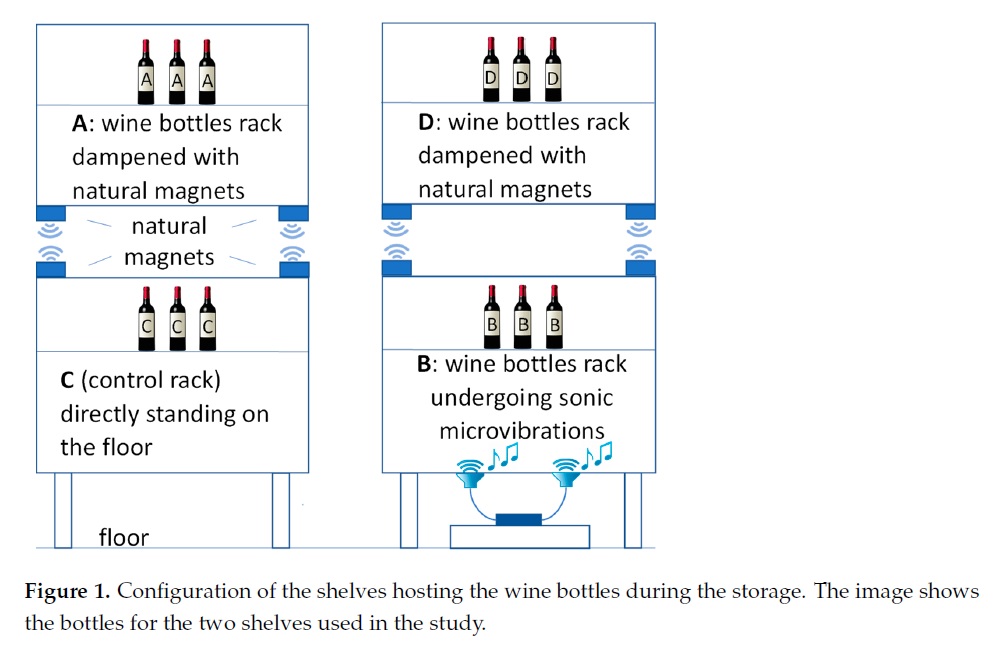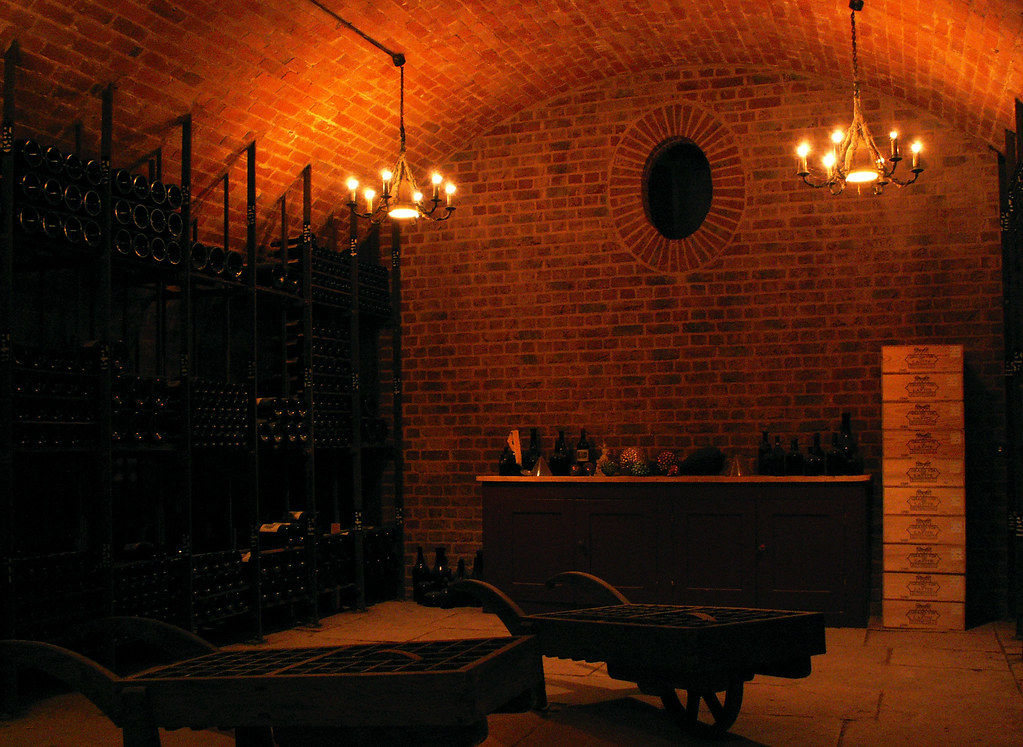Well hello there! It’s been a minute!
I’ve missed writing very much, and think I may finally be coming out of the mental fog I’ve had these past several months. Here’s to fresh starts!
Today I’m going to talk about a new study about micro-vibrations and how these teeny movements may or may not affect the evolution of bottled wine in storage.
It’s well known that larger, macro-vibrations such as transporting wine in a vehicle or something similar to this can have a negative effect on a wine (think: bottle shock). It can lead to muted aromas and flavors, or an otherwise unremarkable sensory experience. With this phenomenon, it’s usually best to wait some time before opening the bottle in order for the flavors and aromas to open back up again, though this timing varies depending upon the wine and how aggressively jostled the bottle was during transport.
What is less understood, however, is the effect of MICRO-vibrations on wine quality and evolution. Think natural vibrations – so tiny that it’s hard for us to notice them. Something even as small as sound vibrations.
Even in the most well-controlled storage environment, it can be hard to control these minuscule micro-vibrations.
A new research article, published in September of this year in the journal Foods, aimed to address this issue by examining the effects of micro-vibrations on bottled wines in storage in “optimal conditions” over a 12-month period.
Here’s what they did and discovered:
BRIEF METHODS
The wines used in this study were Pinot Noir bottles under screwcap closures from Franz Haas in Montagna, Italy.
The wines were stored on 4 different shelves, depending upon the treatment (or lack thereof). For the micro-vibrations, a system set to play very low-frequency sounds was used.
For the configuration of bottles, imagine two shelves. On one shelf, no sonic vibrations were applied. At the bottom of this shelf were the control wines, and on the top shelf were wines that were “protected” by natural magnets to dampen any uncontrolled micro-vibrations.
The second shelf was set up the same way, except this shelf was exposed to sonic micro-vibration low-frequency sounds. The bottom shelf was not “protected”, while the top shelf utilized natural magnets to dampen the micro-vibrations both from the sound device and any uncontrolled micro-vibrations.
Briefly, the natural magnets dampen or mask the effects of the micro-vibrations by the following: “Repelling magnets form a device which resists motion via viscous friction. The resulting force is proportional to the velocity, but acts in the opposite direction, slowing the motion and adsorbing the energy. Natural repelling magnets use magnetism to transform non-harmonic vibrations into harmonic vibrations and were used to reduce the destructive energy vibrations reaching the bottle.”
In case that was confusing, I like to think about the concept like this: you know when you put the “wrong end” of a magnet against the same charged end of another magnet, they repel – or push – each other away. Imagine you have two magnets attached to a shelf such that the same charged poles are facing one another. Next, imagine you have sound waves coming in the direction of those magnets. The force from the repelling magnets will effectively absorb the incoming sound waves and “cancel out” any vibrational force those sound waves would have had on the bottles of wine above it. This explanation may not be completely scientifically accurate, but I think it gives a decent simplified description of the process.
Soooo, long story short, the bottle configuration looked like this:

Samples were taken and analyzed at various time points throughout the study: at the beginning, after 1 month, 3 months, 6 months, and 12 months of storage.
The following were analyzed from the wine samples: phenolic compounds, volatile compounds, and sensory analysis.
For the sensory analysis, 13 students and technical staff from Free University of Bolzano-Bozen in Italy were recruited and subsequently trained in specific sensory evaluation techniques. After training, panelists were asked to analyze the sample wines for visual and smell/taste as well as the overall quality of each sample.
SELECTED RESULTS
- Phenolics: All phenolic compounds tested changed significantly over time (expected), while only two compounds (possibly a procyanidin dimer and another unidentified compound) were impacted by the micro-vibration treatment.
- Volatile compounds: All volatile compounds tested changed significantly over time (expected), but no micro-vibrational treatment effects were observed.
- Sensory Analysis:
- The overall quality score for the wines tested at the very beginning of the study was the lowest – expected as the wines were likely “not ready” at this time.
- At the beginning of the study, the overall quality scores of the magnetic dampening wines WITHOUT additional sonic vibration exposure were similar to the control wines.
- At the beginning of the study, the wines WITH the additional sonic vibration exposure scored the highest in overall quality.
- In theory, this may indicate the micro-vibrations of the low-frequency sound exposure helped “age” the wine faster and thus be ready for consumption sooner.
- However, after 12 months, the wines WITH additional sonic vibration exposure scored lower in
- After 12 months of bottle aging:
- The highest-scoring wines were the two treatments that were NOT exposed to the low-frequency sound vibrations.
- The treatment wines that were exposed to additional sound vibrations and that were NOT dampened by the magnets were described using the descriptors “woody”, “burning”, “sourness”, and “unpleasant flavors”.
- These wines also correlated with the following compounds:
- Octanoic acid
- Ethyl ester
- 2,4 di-tertbutyl phenol
- p-coumaryl-quinic acid
- Procyanidin dimer-1
- An unidentified phenolic compound
- These wines also correlated with the following compounds:
- The treatment wines that were NOT exposed to additional sound vibrations and that WERE dampened by magnets were described using the descriptors “clarity”, “woody flavor”, “astringency”, and “spicy flavor”.
- These wines also correlated with the following compounds:
- Decanoic acid
- Ethyl ester
- Propanoic acid
- 2-hydroxy ethyl ester
- 2 unidentified phenolic compounds.
- These wines also correlated with the following compounds:
- The control wines (no dampening and no additional sound exposure) did not correlate with any particular sensory descriptor, but were associated with the following compounds:
- Dodecanoic acid
- Ethyl ester
- 1-butanol
- 3-methyl
- Syringic acid
- An unidentified phenolic compound
- The treatment wines that WERE exposed to the low-frequency sound AND WERE dampened by magnets were described with the following descriptors: “color intensity”, and “bitterness”.
- These wines also correlated with the following compounds:
- Ethyl acetate
- Cyclopropane
- Gallic acid
- Astilbin-isomer 1
- These wines also correlated with the following compounds:
CONCLUSIONS
So, what does all of this mean? Well, the results of this study indicate that time had a much greater influence on the evolution of the wine in the bottles than micro-vibration treatments did.

That being said, dampening the micro-vibrations with magnets did seem to have an effect on the wines, even if it was a small one – those wines that were “protected” by the magnets seemed to be more similar to the wines at the earlier time points than “unprotected” wines.
In other words, it’s possible that micro-vibrations can affect the evolution and overall quality of a wine in storage, but in my opinion, it’s likely so small that it really doesn’t make a big difference in the grand scheme of things.
Perhaps if you want a wine to age faster in the cellar, you make the beat drop up in this place, but without further study, I can’t say one way or another if playing tunes for your sleeping wine bottles will make a difference that is big enough to matter in the long run.
A really interesting concept though – I’d be interested in seeing more studies on this, even if it’s purely from an academic (and not at all practical) standpoint.
Study source for further reading (it is open access!):

1 comment for “Don’t Stop ‘Til the Beat Drops: The Effect of Micro-Vibrations on Wine Quality During Storage”